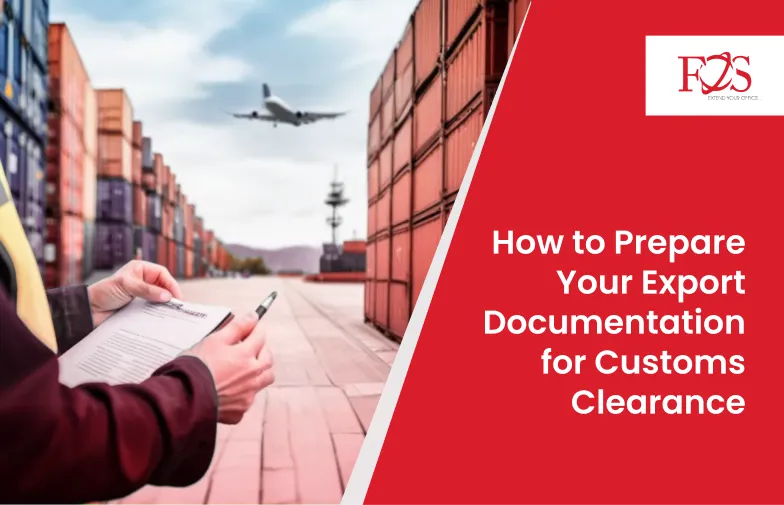In the intricate dance of international trade, the role of export documentation is akin to the compass that guides a ship through uncharted waters. The customs clearance process stands as a gateway between borders, a critical juncture where meticulous preparation can mean the difference between smooth sailing and choppy waters. In this comprehensive guide, we delve into the art of preparing export documentation for customs clearance a skill that not only ensures the seamless flow of goods but also unlocks opportunities for businesses to conquer new markets and captivate the global stage.
Understanding the Foundation: Why Export Documentation Matters
Export documentation is more than just a procedural requirement it’s the cornerstone upon which successful cross-border trade is built. Clear and accurate documentation not only facilitates efficient customs clearance but also enhances transparency, mitigates risks, and engenders trust between trading partners. Moreover, it ensures compliance with regulatory frameworks, protecting businesses from potential penalties or delays.
The Essential Elements: Key Export Documents
Commercial Invoice: This document serves as the commercial foundation of the transaction, detailing the nature, quantity, and value of the goods being shipped. It is vital for customs valuation and serves as a basis for calculating duties and taxes.
Packing List: Providing detailed information about the contents of each package, the packing list aids customs officers in verifying the accuracy of the shipment. It assists in the physical examination of goods and ensures compliance with labeling and packaging requirements.
Bill of Lading (B/L) or Airway Bill: The B/L or airway bill is proof of ownership and serves as a contract of carriage between the shipper and the carrier. It outlines the terms of transportation, delivery instructions, and consignee details.
Certificate of Origin: This document attests to the origin of the goods and is crucial for determining eligibility for preferential tariff treatment under trade agreements. It ensures that customs duties are correctly calculated based on the country of origin.
Export License or Permit: In cases where certain goods are subject to export controls or regulations, an export license or permit may be required. These documents are issued by government authorities and validate the legal export of specific goods.
Inspection Certificates: Some countries require inspection certificates to ensure the quality, safety, and conformity of imported goods. These certificates may be issued by third-party inspection agencies.
Crafting a Comprehensive Strategy: Step-by-Step Preparation
Research and Compliance: Thoroughly research the export regulations and requirements of the destination country. This includes understanding tariffs, quotas, labeling, and packaging standards. Ensuring compliance with these regulations is the first step towards smooth customs clearance.
Accurate Documentation: Precision is paramount when preparing export documentation.Check everything that you do, including product descriptions, quantities, and values. Any discrepancies can lead to delays or additional costs.
Partnering with Freight Forwarders: Collaborating with experienced freight forwarders can simplify the documentation process. These professionals have a deep understanding of customs requirements and can guide you through the intricacies of export paperwork.
Technology and Automation: Embrace digital solutions and automation tools that can streamline the documentation process. This not only reduces the risk of errors but also expedites the customs clearance process.
Communication with Customs Brokers: Establish a clear line of communication with customs brokers in the destination country. They can provide insights into local requirements, facilitate the clearance process, and address any potential issues.
Challenges on the Horizon: Navigating Complexities
While mastering export documentation is essential, challenges can arise that demand adept navigation
Regulatory Changes: Export regulations are subject to change, and staying updated with the latest requirements is crucial to avoid disruptions.
Language Barriers: Dealing with documentation in foreign languages can lead to misunderstandings or errors. Ensuring accurate translation is essential.
Product Classification: Determining the correct Harmonized System (HS) code for your goods is crucial for accurate customs assessment. Misclassification can lead to delays or incorrect duties.
Document Authentication: Some countries may require documents to be legalized or authenticated, adding an extra layer of complexity.
Cultural Sensitivity: Cultural norms and practices may impact the documentation process. Understanding these nuances can facilitate smoother interactions with customs officials.

Conclusion
In the global arena of trade, the mastery of export documentation is the helm that guides businesses toward success. Beyond a mere bureaucratic necessity, it is a strategic art that explore new opportunities, fortifies international relationships, and opens doors to uncharted markets. The symphony of accurate paperwork, compliance, and efficient processes harmonizes to create a seamless customs clearance experience an experience that transforms challenges into triumphs and aspirations into achievements.
As businesses embark on their export journeys, armed with a profound understanding of export documentation’s importance and intricacies, they set sail on a voyage that promises growth, expansion, and a place on the global stage. Through meticulous preparation, collaboration, and the embrace of technology, the oceans of international trade can be navigated with finesse, ensuring that every shipment arrives at its destination smoothly, every partnership flourishes, and every horizon brims with possibilities.
